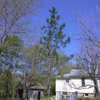can I 'revert' anAlbertiana Conica?
jamesteampro
10 years ago
I received a free mini christmas tree and it turns out to be an Albertiana Conica. I've read that they can revert back to a standard sized tree. Is it possible fornmw to either force it back to a standard growing tree or is there a way to perhaps just help it to and hope it reverts back by itself.
If it isn't already obvious, I know very little about gardening.
Thank you,
James.




outback63 Dennison
tsugajunkie z5 SE WI ♱
Related Professionals
Simpsonville Landscape Architects & Landscape Designers · Forest Park Landscape Architects & Landscape Designers · Forest City Landscape Architects & Landscape Designers · Woburn Landscape Contractors · Blue Springs Landscape Contractors · Brockton Landscape Contractors · Coram Landscape Contractors · Huntley Landscape Contractors · Los Banos Landscape Contractors · Ocoee Landscape Contractors · Rockwall Landscape Contractors · Thornton Landscape Contractors · Tigard Landscape Contractors · Yukon Landscape Contractors · Antioch Landscape Contractorsken_adrian Adrian MI cold Z5
pineresin
mikebotann
pineresin
jimbobfeeny
pineresin
ken_adrian Adrian MI cold Z5
pineresin
severnside
jimbobfeeny
severnside
jimbobfeeny
pineresin
severnside